Zero Budget Natural Farming
First published in Sanctuary Asia,
Vol. 39
No. 2,
February 2019
How to fix our broken food system and stop its collateral damage on Nature
By Pavan Sukhdev
The world’s food system is broken...
An estimated 0.8 billion people still go to bed hungry, two billion people suffer from malnutrition. On the other hand, almost 1.9 billion people are overweight, of these, 0.7 billion are obese. Pesticides cause endocrine disruption, leading to widespread neurological ailments. Glyphosates, widely used as herbicides are causing cancer. Type-2 diabetes, a lifestyle disease related to our diets, now has over 400 million sufferers (four times the number in 1980) and the global cost of diabetes type 2 is more than 850 billion USD per year. Not surprisingly, the Global Nutrition Report 2016 states that “Diet is now the number-one risk factor for the global burden of disease.” Furthermore, food systems globally are now the source of 60 per cent of terrestrial biodiversity loss, 24 per cent of greenhouse gas emissions, 33 per cent of degraded soils and 61 per cent of commercial fish population depletion. Food systems consume over 80 per cent of our freshwater supply, and are the main reason why the planet’s vital rainforest cover is declining.
This broken food system severely damages Nature
Agri-commodities (palm oil, beef, soya, cash-crops) are now the largest direct drivers of nature loss on land, causing losses of forests and wetlands through continuing changes in land use, as well as through the damage caused by agri-chemical inputs. Fossil fuels – through climate change effects on forests and wildlife and through ocean acidification have the largest indirect impacts on nature. Deforestation in most biodiversity hotspots – from Brazil to Indonesia to Australia – is attributed to the expansion of conventional farming. Furthermore, leachates and run-offs from conventional farming pollute river systems and coastal waters and damage coral reefs.
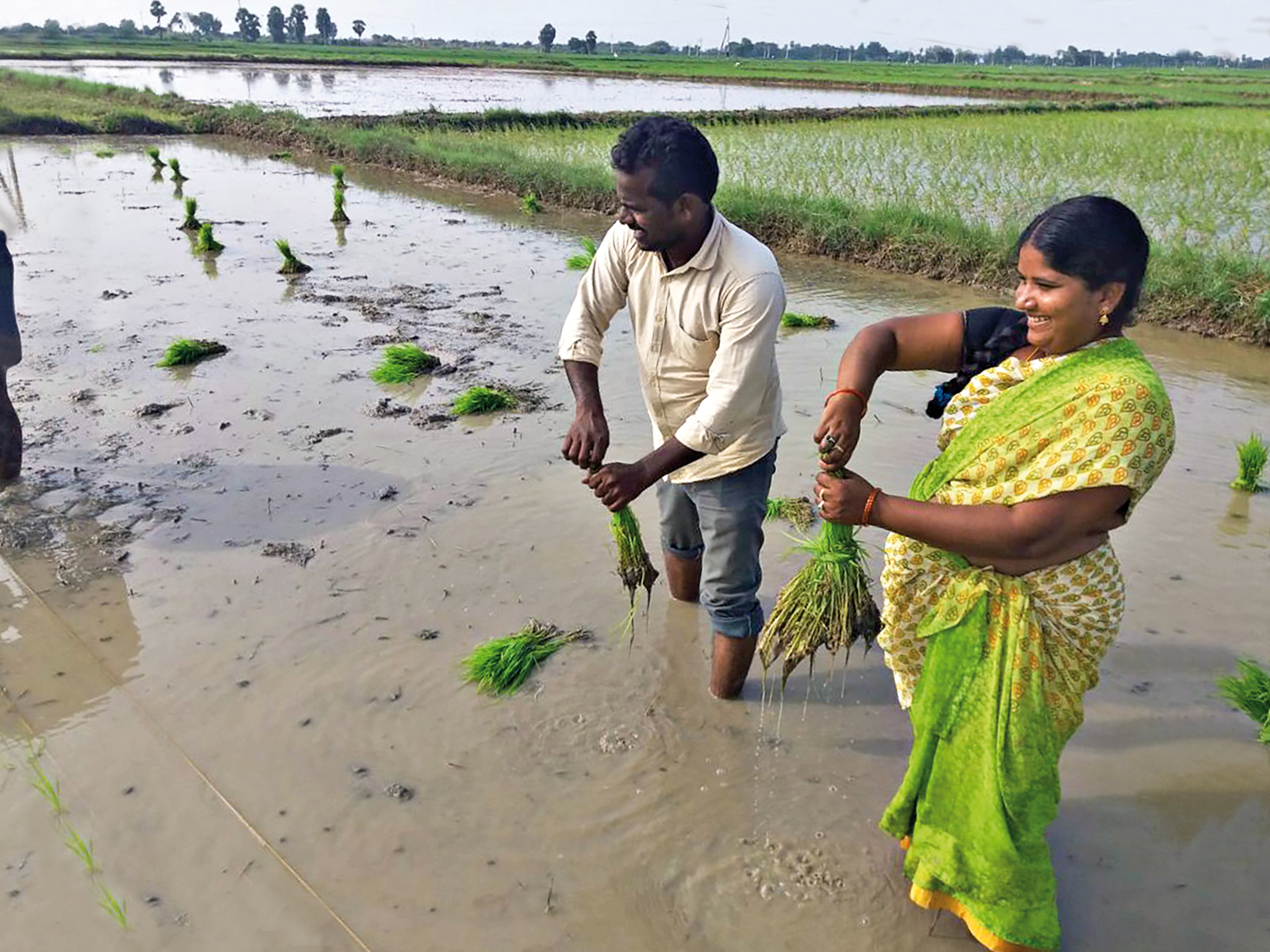
Farmers in a paddy field clip the tips of rice saplings before transplanting the crop. This protects the seedling from pests such as the paddy stem borer that lay their eggs on the leaves. The caterpillars of the borer attack the centre shoot of the plant, killing it effectively. Photo: APBZNNF team.
Is there evidence that our broken food system can be fixed?
Yes, indeed there is.
The usual justification given by promoters of chemical fertilisers and pesticides, and by their supporters in the government, is that “crop yields cannot be improved without chemical fertilisers and pesticides”. Such justification is blatantly false. There is now significant evidence that higher yields can be achieved by better management and agro-ecological techniques, in other words, that “sustainable intensification” is not an aspiration but a reality. This is achieved through a vast range of methods across different locations (models such as natural farming, low- tillage farming, organic farming, and techniques using farm manure, recycling water on-farm, using several different crop strains to protect against pests, and using natural pesticides such as neem extracts). A study done by Prof. Jules Pretty in 2006 showed the statistical evidence (see summary table below) of yield increases across 286 sustainable farming projects covering over 12 million farmers, clearly establishing that higher yields were more likely achieved by imitating natural production. In all categories of farming, yields increased, with the average yield increase being almost 80 per cent. Later studies have validated these conclusions.
Table of Yield Increases: Adoption and impact of sustainable intensification technologies across eight different types of agricultural systems and 286 projects in 57 countries.
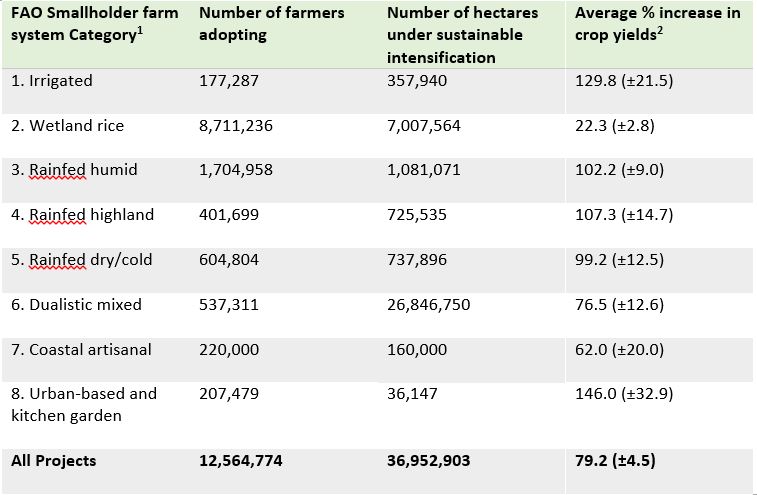 Notes:
Notes:
1) Smallholder farm categories from Dixon and Gulliver (2001).
2) Yield data from 360 crop-project combinations; reported as % increase (thus a 100% increase is a doubling of yields). Standard errors are in brackets.
These results are not widely known to policy makers, nor spoken about the popular media, even though their importance is blindingly obvious, so we must ask ourselves: why? Is it another “inconvenient truth” that the Green Revolution approach of chemical- input-based intensification was good for the profits of fertiliser and pesticide companies, but bad for almost everything else? Is it that we are so blinded by today’s dominant economic model, that we also sightlessly accept its mantra of “private profits, public losses”?
What is Natural Farming?
Natural Farming is an ecological farming approach established and written about by Masanobu Fukuoka (1913–2008), a Japanese farmer and philosopher, and author of The One-Straw Revolution. It mimics nature and requires no man-made inputs. There are many variants of this philosophy and its various techniques and practices, but one in particular (i.e. Zero Budget Natural Farming) deserves specific mention as it has already begun to replicate and scale significantly in India and elsewhere.
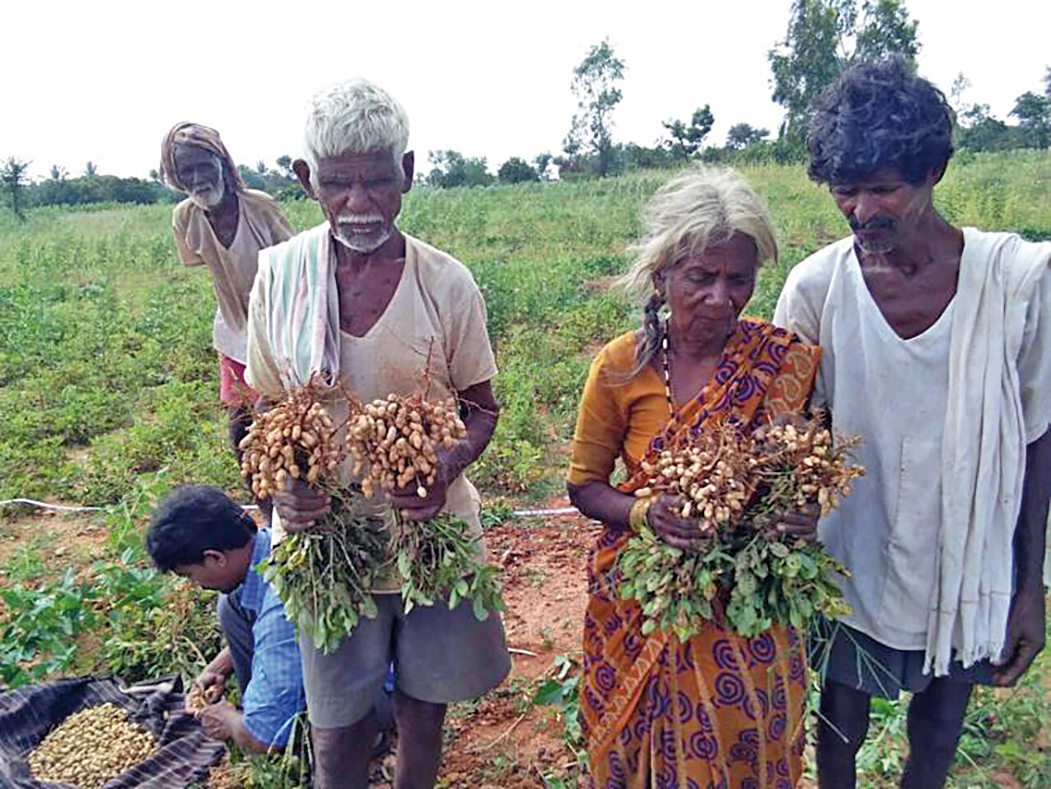
Farmers pull out quantities of groundnut obtained through the practice of Zero Budget Natural Farming (ZBNF). Photo: APZBNF team.
Agriculture is about biology, not chemistry!
At the heart of our failure to get things right with food is the hackneyed thinking that success in farming is about intensification using chemical inputs. Agricultural practices can be changed to more ‘biodiversity friendly’ models, and in the process, we find that they generate benefits for climate, water, soil health and especially human health. This is because most soils have enough minerals, but they are just not easy for plants to ‘digest’. It needs an entire ecosystem of soil creatures – bacteria, fungi, nematodes and worms – to deliver the plant’s food in a form that can be absorbed by its roots. The brainchild of Dr. Subhash Palekar, a path-breaking agriculturalist, ‘Zero-Budget Natural Farming’ (ZBNF) begins with recognising this reality that agriculture is fundamentally about biology and not chemistry. Soil is rich in numerous minerals, but the absence of soil biota can lead to its inability to support plant life in general and crops in particular.
Revitalising this soil through various natural farming techniques, ZBNF has achieved impressive success in India and elsewhere. The four pillars of ZBNF – the four techniques that ensure that soil biology is revitalised, yields increased, water demand reduced, and plant resilience increased - are common features of this approach.
1. Enhancing Soil Biology:
Native cow- dung and cow urine is enriched with local molasses and flour to aid bacterial growth, then diluted with water and applied to soil as an inoculant to stimulate soil microbes, not as a fertiliser. One cow usually suffices for an estimated 30 acres. This is quite a different approach to the use of cow dung from other methods such as organic farming, which uses cow-dung as an input to compost.
2. Microbial Coating of Seeds:
Coating seeds with cow dung/urine-based formulations provides immunity during a critical stage of life.
3. Continuous Mulching:
Continuous crop cover through polycropping, intercropping, etc. ensures water efficiency because evapo-transpiration is reduced by crop cover and continuous mulching. Optimal sunlight harvesting is done through multi- layered farming – fruit trees, cereals, pulses, vegetables. Crop residues are used to improve soil fertility and reduce evaporation losses, with one crop’s residue after harvest helping to grow the other.
4. Botanical Pest Control:
Pest management is achieved through sound agronomy and (when needed) numerous botanical extracts, including neem and tobacco formulations.
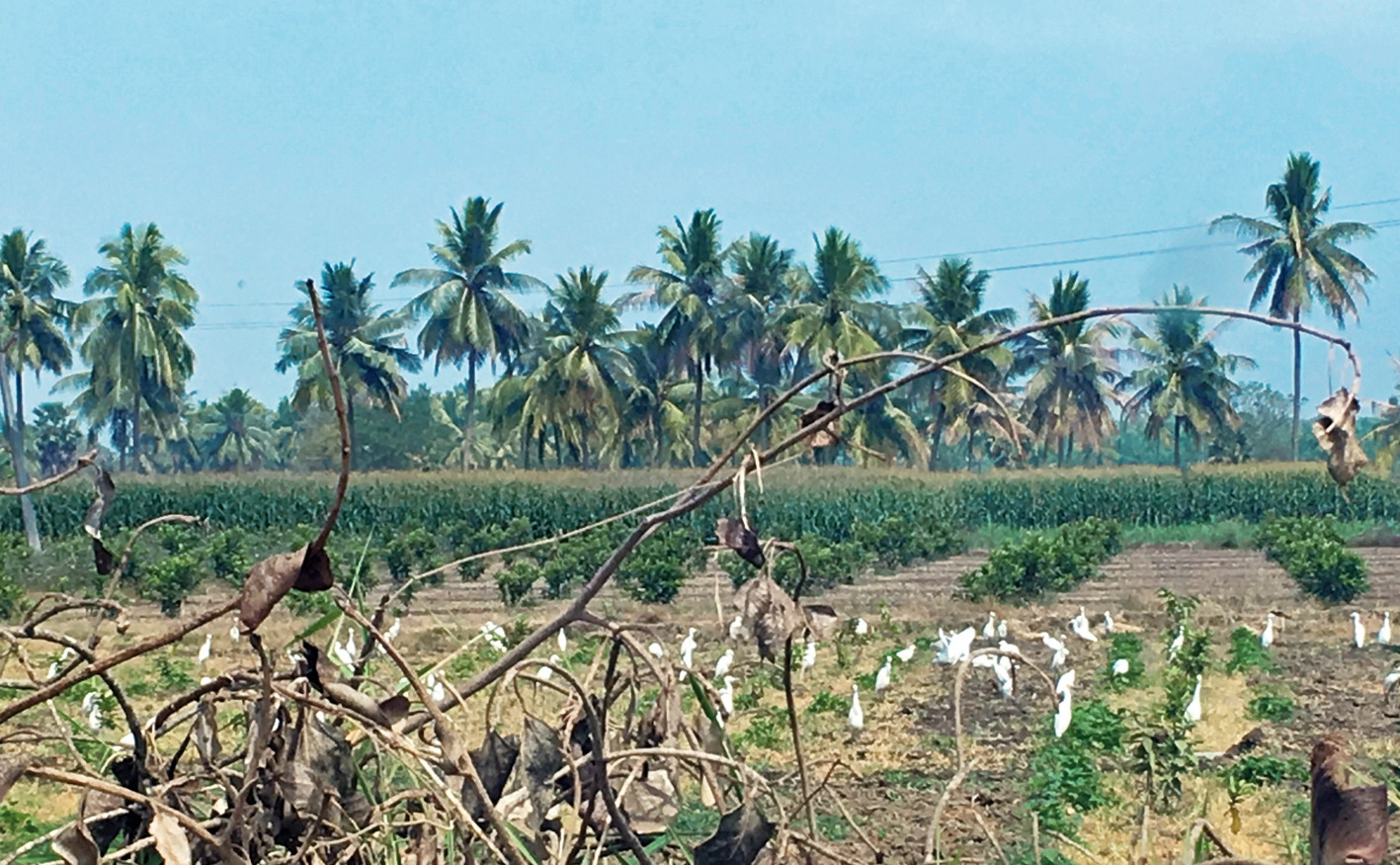
Natural farming, supports entire ecosystems, and helps maintain food chains beneficial for farmers and crops. Such fields often host a variety of secondary predators including avifauna that help keep insect populations in check. Photo: Pavan Sukhdev.
These so-called “four pillars of ZBNF” are indeed only “pillars” and not the whole building, because farmers are free to experiment and create their own locally suitable variants of these basic techniques. For example, in addition to neem-based and tobacco-based formulations, farmers have found and used over 200 other natural botanical pest control formulations.
Spearheaded by the retired senior bureaucrat Vijay Kumar Thallam, and under Chief Minister Chandrababu Naidu’s active leadership, the ZBNF scheme of Andhra Pradesh has just crossed a landmark in natural farming: over the past four years, half a million farmers have converted from “chemical farming” to this much healthier “natural farming” model.
The direct benefits of this system are of course higher yields, lower costs, better crop resilience and better income for India’s farmers. This is potentially the single most important driver of development for India’s villages: it has demonstrably higher yields (evidenced through crop-cutting experiments over the last few years -- see banner picture above) across all crops – from rice and maize, to groundnuts, red gram and black gram, to vegetables and fruits such as papaya and pomegranates. It has higher resilience to drought and storms, hence lower risks for small farms. It is hoped that fairer prices will follow.
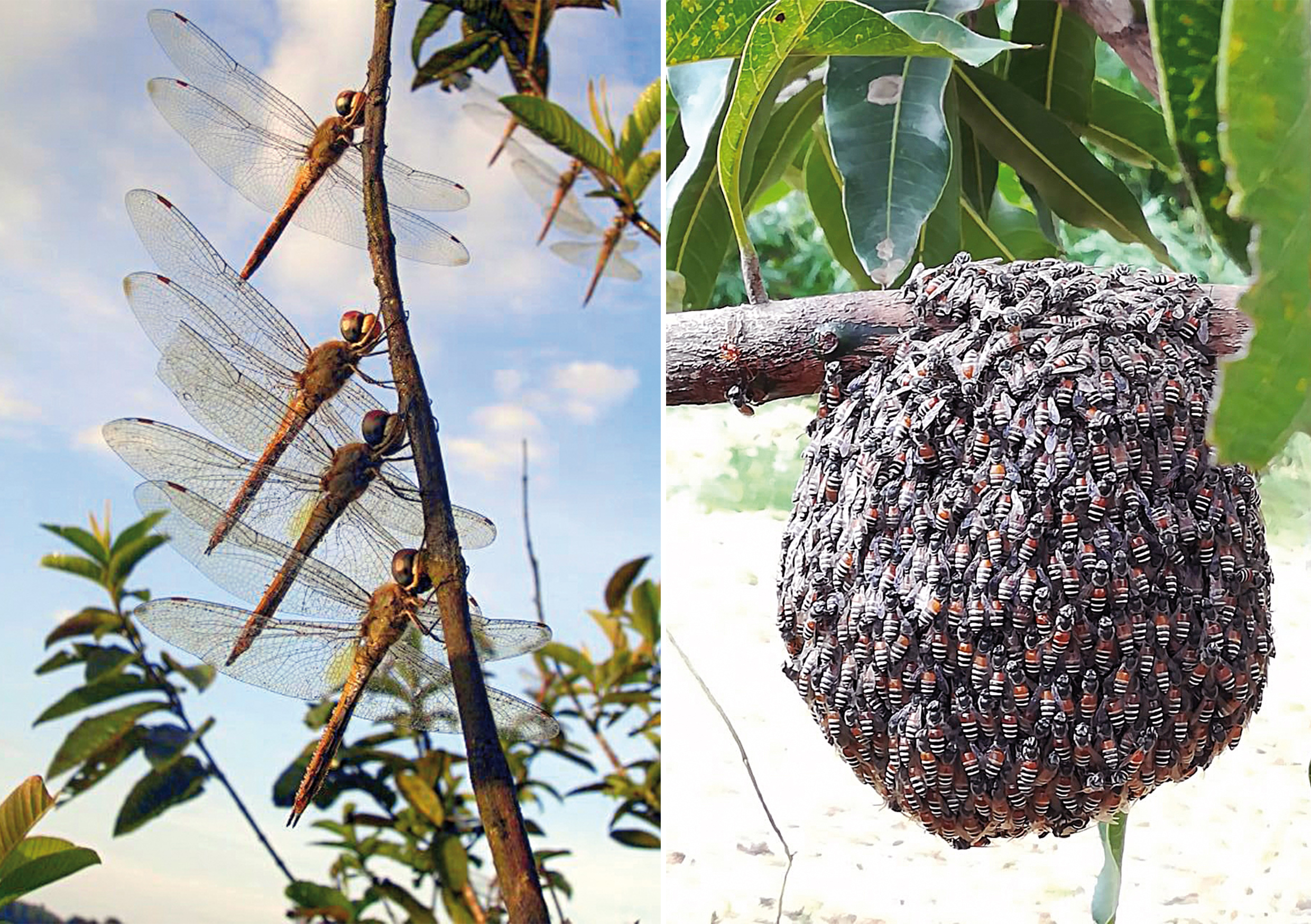 Dragonflies such as the Pantala flavescens provide crucial pest-control services for farmers, and bee populations serve as key pollinators of agricultural crops across the world and help increase food security. Photo: Public Domain and APZBNF team.
Dragonflies such as the Pantala flavescens provide crucial pest-control services for farmers, and bee populations serve as key pollinators of agricultural crops across the world and help increase food security. Photo: Public Domain and APZBNF team.
In addition to these direct economic advantages for small farmers, it has ‘collateral benefits’ that are equally important: food security as well as environmental sustainability. It enhances water storage, soil fertility, soil organic matter, and restores soil biodiversity. Beneficial insects (such as predators of plant pests) return, dragonflies are visibly abundant, and avifauna follows. All this sounds like a very different world from the world of chemical farming which has been advocated for decades by promoting the so-called ‘Green Revolution’ in India, together with its devastating impacts on soil health and human health.
Is another world of farming just an idealistic aspiration? Seeing is believing, and the ZBNF farmers of Andhra Pradesh welcome visitors to see what they have achieved.
Arundhati Roy wrote, “Another world is not only possible, she is on her way. On a quiet day, I can hear her breathing”.





